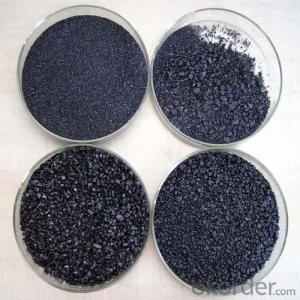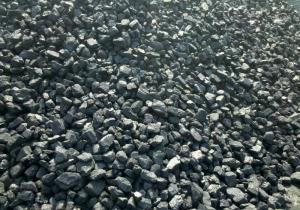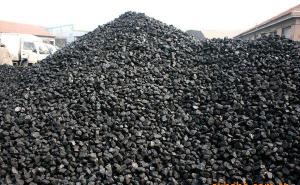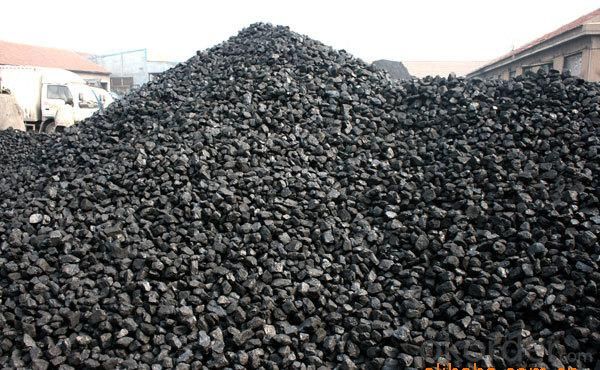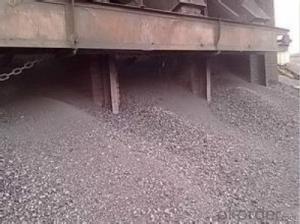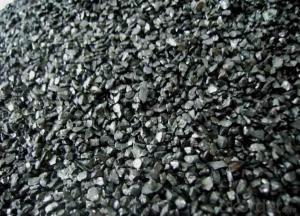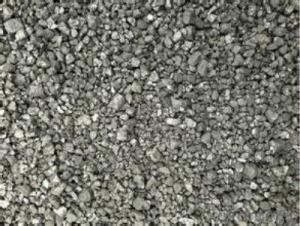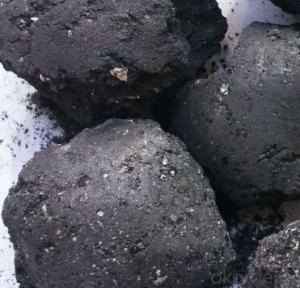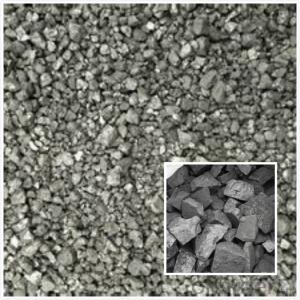Calcined Anthracite High Heat Productivity
- Loading Port:
- Tianjin
- Payment Terms:
- TT or LC
- Min Order Qty:
- 20 m.t.
- Supply Capability:
- 10000 m.t./month
OKorder Service Pledge
OKorder Financial Service
You Might Also Like
Quick Details
Place of Origin: Ningxia, China (Mainland)
Application: steel making
Shape: granule
Dimensions: FC90-95%
Product Type: Carbon Additive
C Content (%): 90-95% MIN
Working Temperature: -
S Content (%): 0.5%MAX
N Content (%): -
H Content (%): 0.6%MAX
Ash Content (%): 8.5%MAX
Volatile: 2%MAX
ADVANTAGE: low ash & sulfur
COLOR: Black
RAW MATERIAL: TaiXi anthracite
Packaging & Delivery
Packaging Details: In 1MT plastic woven bag.
Delivery Detail:30-40 DAYS
Specifications of Calcined Anthracite High Heat Productivity
Carbon Additve low Ash,S,P
FC>95% ASH<4% S<0.3%
It is made from TaiXi anthracite.
instead of pertrol coke reduce the cost
Structure of Calcined Anthracite High Heat Productivity
Shape: granule
Dimensions: FC90-95%
Product Type: Carbon Additive
C Content (%): 90-95% MIN
Working Temperature: -
S Content (%): 0.5%MAX
N Content (%): -
H Content (%): 0.6%MAX
Ash Content (%): 8.5%MAX
Volatile: 2%MAX
ADVANTAGE: low ash & sulfur
COLOR: Black
RAW MATERIAL: TaiXi anthracite
Feature of Calcined Anthracite High Heat Productivity
Specifications (%): | ||||||
Grade | F.C | Ash | V.M | Moisture | S | Size |
CR-95 | ≥95 | <4 | <1 | <1 | <0.3 | 0-30mm |
CR-94 | ≥94 | <4 | <1 | <1 | <0.3 | |
CR-93 | ≥93 | <6 | <1 | <1 | <0.4 | |
CR-92 | ≥92 | <7 | <1 | <1 | <0.4 | |
CR-91 | ≥91 | <8 | <1 | <1 | <0.4 | |
CR-90 | ≥90 | <8.5 | <1.5 | <2 | <0.4 | |
Image of Calcined Anthracite High Heat Productivity
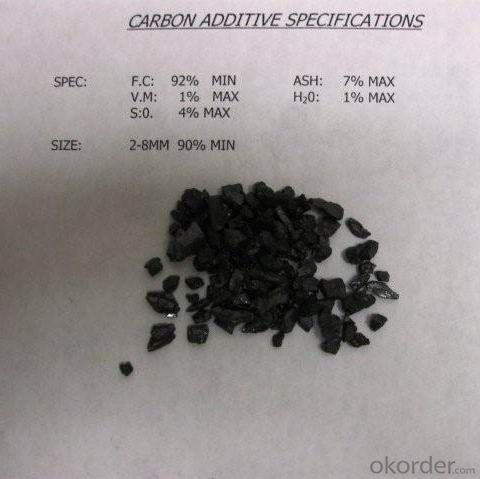
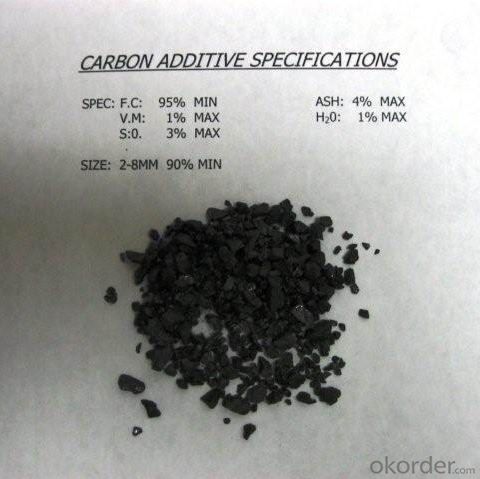
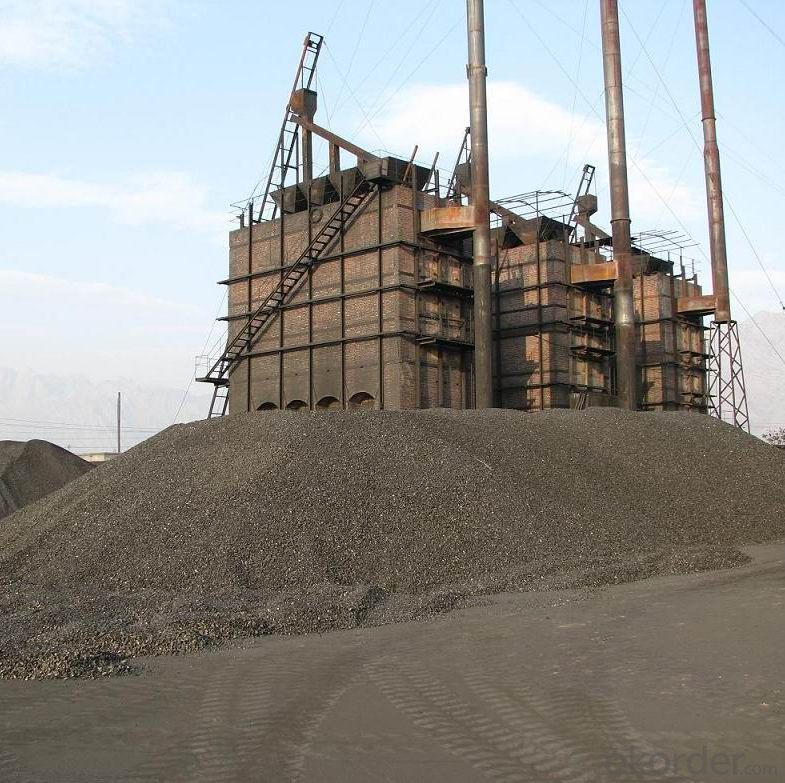
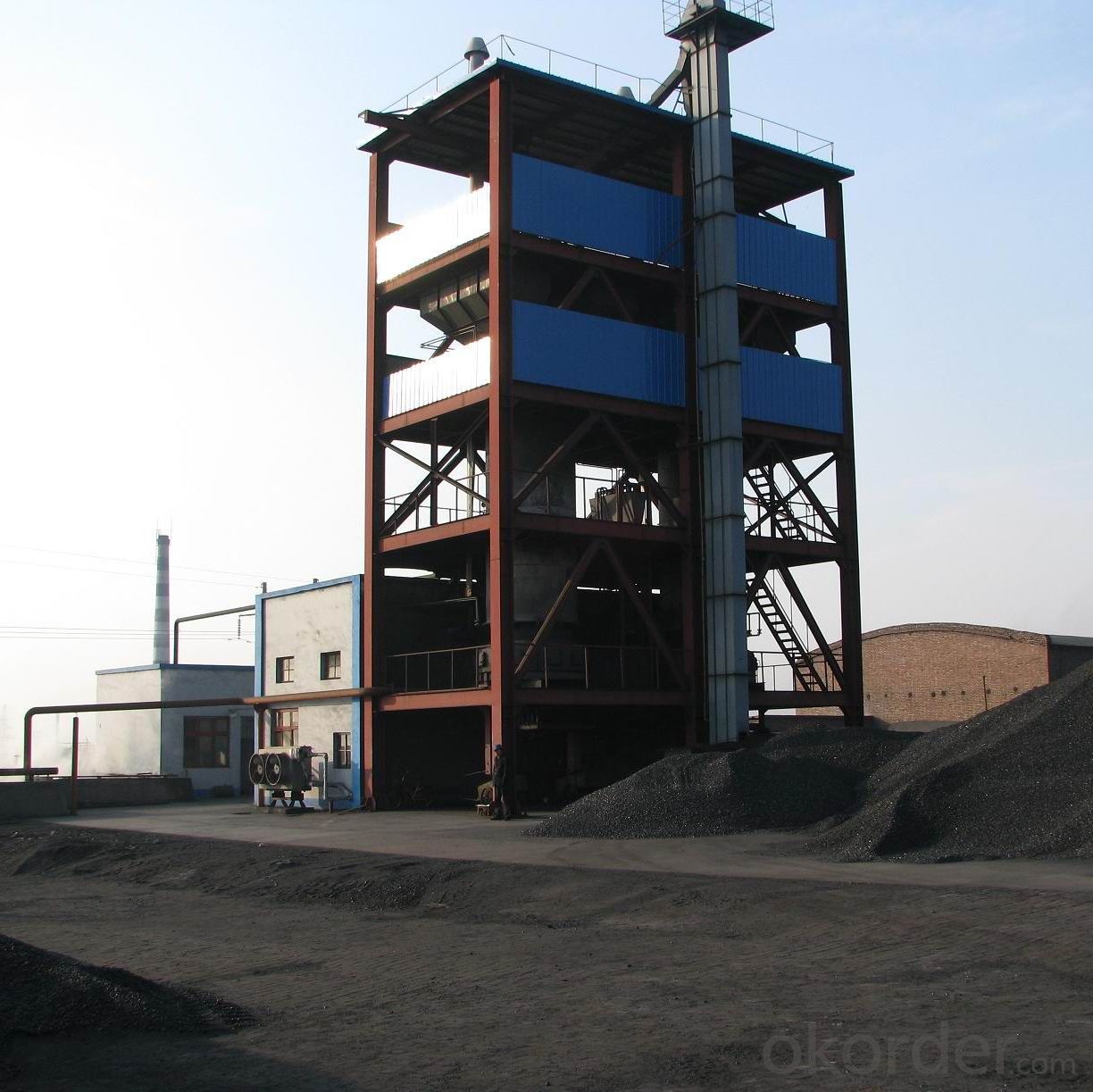
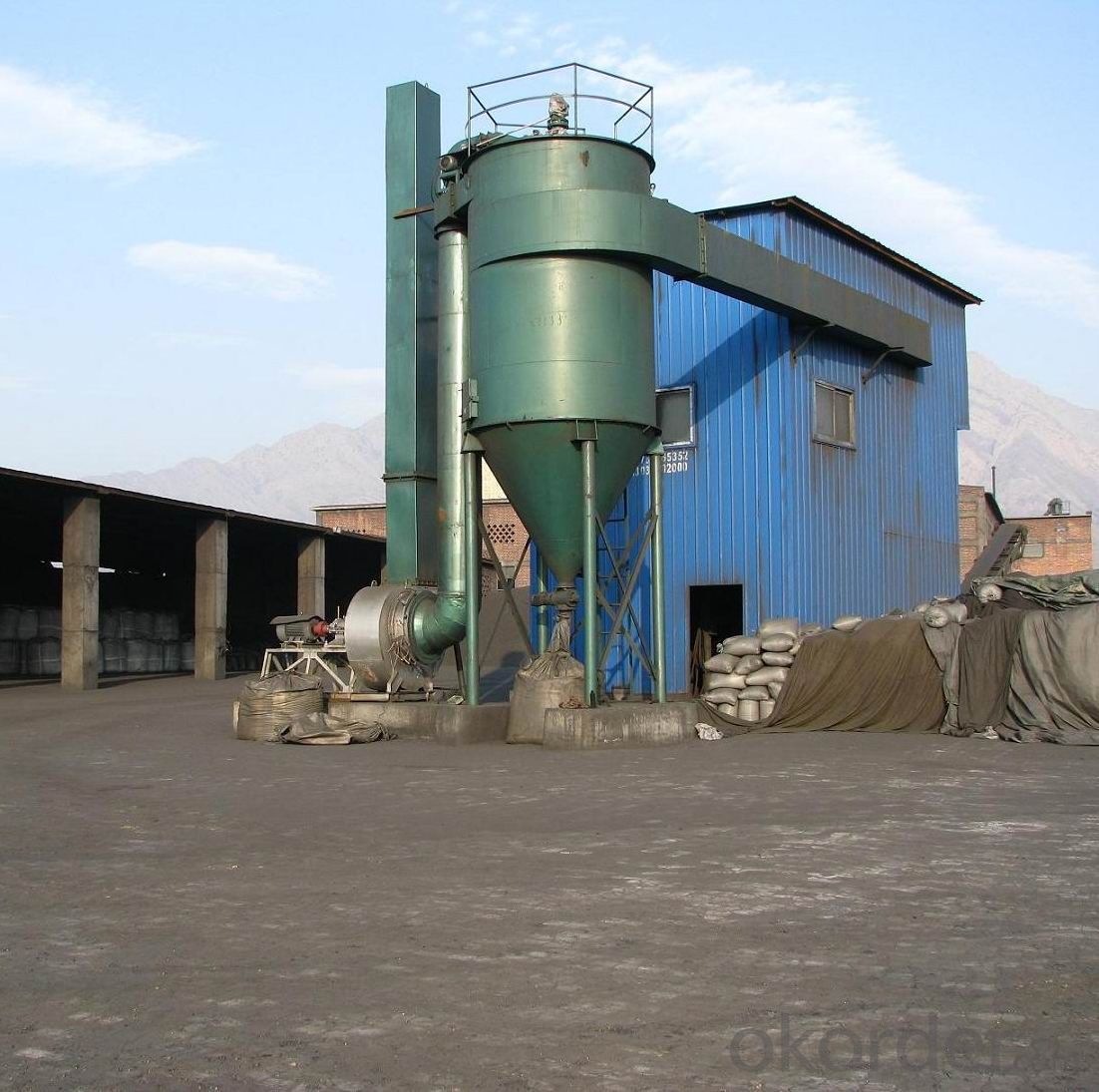
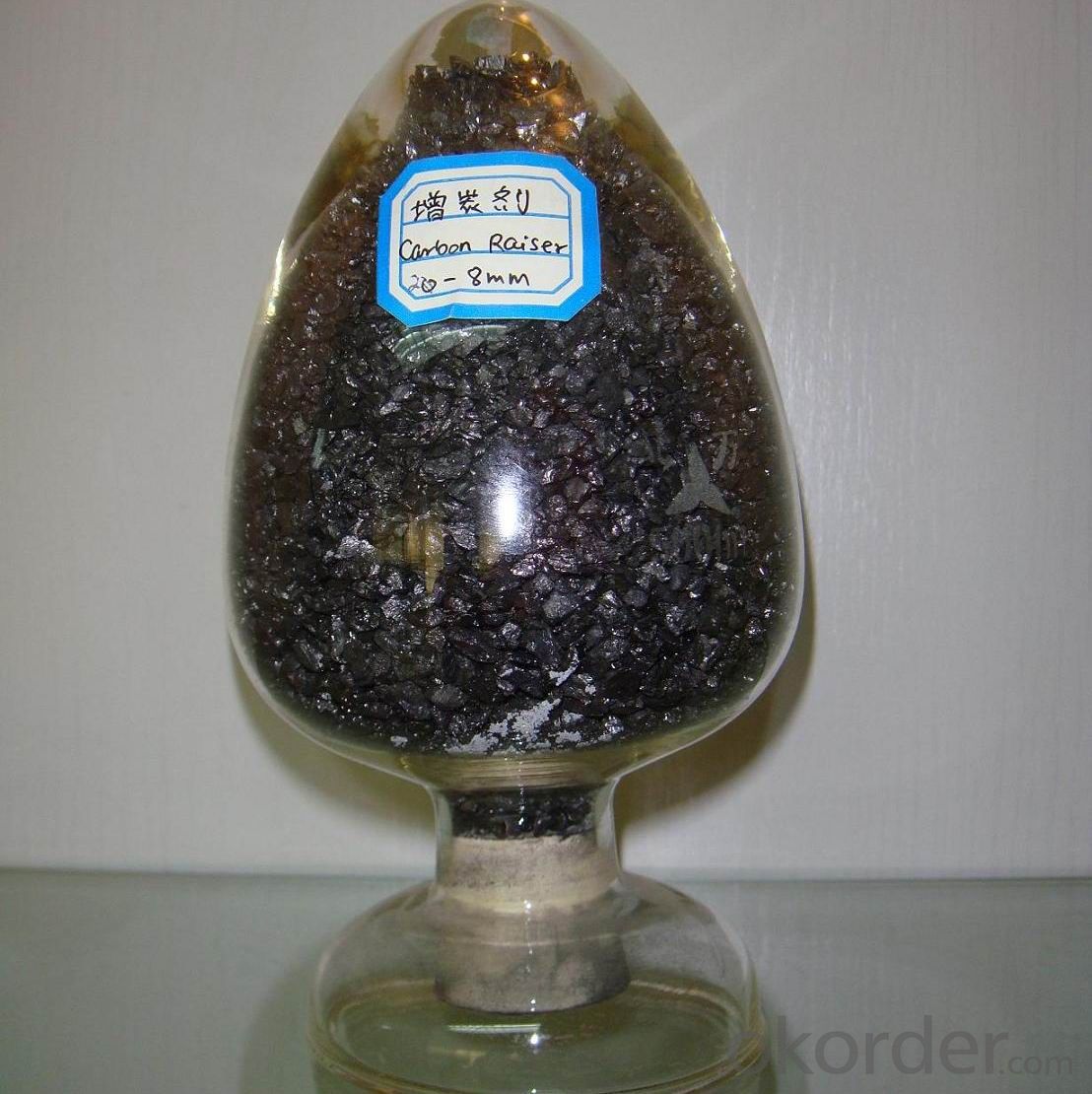
FAQ of Calcined Anthracite High Heat Productivity
Why we adopt carbon additive?
Carbon Additives used as additive in steel making process. It made from well-selected Tai Xi anthracite which is low in content of ash, sulphur, phosphorus, high heat productivity, high chemically activation.
Mainly industry property of it is: instead of traditional pertroleum coal of Carbon Additives, reduce the cost of steelmaking.
Advantage:
Calcined Anthracite High Heat Productivity
1.High quality and competitive price.
2.Timely delivery.
3.If any item you like. Please contact us.
Your sincere inquiries are typically answered within 24 hours.
- Q: What are the impacts of carbon emissions on wildlife?
- Carbon emissions have a significant impact on wildlife and their ecosystems. One of the most direct impacts is through climate change caused by the release of greenhouse gases, primarily carbon dioxide, into the atmosphere. As carbon emissions contribute to the warming of the planet, it disrupts the delicate balance of ecosystems and affects biodiversity. One of the major consequences of climate change for wildlife is the alteration of habitats. Rising temperatures can lead to the loss of critical habitats such as coral reefs, mangroves, and polar ice caps, which are home to numerous species. This loss of habitat can result in the displacement or extinction of vulnerable species, disrupting entire food chains and ecological systems. Additionally, climate change can affect the timing and availability of resources for wildlife. Shifts in temperature and precipitation patterns can disrupt the timing of migration, breeding, and hibernation for many species. This can lead to mismatches between the availability of food sources and the needs of wildlife, ultimately impacting their survival and reproduction. Another impact of carbon emissions on wildlife is ocean acidification. When carbon dioxide dissolves in seawater, it forms carbonic acid, which lowers the pH of the oceans. Acidic waters can negatively affect marine organisms, particularly those with calcium carbonate shells or skeletons, such as corals, oysters, and certain types of plankton. This disruption in the marine food chain can have cascading effects on other marine species, including fish, birds, and marine mammals. Furthermore, carbon emissions contribute to air pollution, which can have direct impacts on wildlife. Pollutants such as nitrogen dioxide and sulfur dioxide can harm respiratory systems, impairing the health and reproductive success of animals. This can be particularly detrimental for species living in or near urban areas with high levels of pollution. In conclusion, carbon emissions have far-reaching impacts on wildlife. Climate change caused by carbon emissions disrupts habitats, alters resource availability, and contributes to ocean acidification. These changes can lead to the displacement or extinction of species, disrupt entire ecosystems, and impact the health and survival of wildlife. It is crucial to reduce carbon emissions and implement sustainable practices to mitigate these impacts and conserve biodiversity.
- Q: How is carbon formed?
- Carbon is formed through various natural processes, primarily through the cycle of life and death of living organisms. The formation of carbon starts with the process of photosynthesis in plants, where they use sunlight, water, and carbon dioxide from the atmosphere to produce glucose. This glucose is then converted into other organic molecules, such as carbohydrates, fats, and proteins, which form the fundamental building blocks of all living organisms. When plants and animals die, their remains and waste products are broken down by decomposers like fungi and bacteria. During this decomposition process, carbon is released back into the environment in the form of carbon dioxide or methane gas. Additionally, some of the organic matter may become buried under layers of sediment, where it undergoes a process called fossilization over millions of years. This fossilization process, combined with heat and pressure, transforms the organic matter into fossil fuels such as coal, oil, and natural gas, which are rich sources of carbon. Apart from the biological processes, carbon can also form through geological processes. Volcanic eruptions release carbon dioxide into the atmosphere, and over long periods of time, this carbon dioxide can dissolve in water and combine with minerals to form rocks like limestone. These rocks act as a carbon sink, storing large amounts of carbon over geologic timescales. Overall, carbon is formed and cycled through a complex interplay of biological and geological processes, playing a crucial role in maintaining the balance of carbon in the Earth's atmosphere and supporting life as we know it.
- Q: Intend to go to the barbecue and 35 friends over the weekend, but because it is new, so I don't know how to put the carbon burning, found some web sites are also a few pens, see me confused......Hope which experienced friend to help enlighten me, the best to the specific point, thank you ah!
- I see selling mutton string is usually used in newspapers or put a small wood charcoal stove, just like
- Q: What are the impacts of carbon emissions on coral reefs?
- Coral reefs are significantly affected by carbon emissions, with one of the most notable consequences being ocean acidification. This occurs when excess carbon dioxide (CO2) from the atmosphere is absorbed, causing the ocean to become more acidic. As a result, coral reefs struggle to build and maintain their calcium carbonate skeletons, which are crucial for their structure and survival. Consequently, their growth rates decrease, and their resilience weakens, making them more susceptible to damage from storms, disease, and other stressors. Moreover, the increasing ocean temperatures caused by carbon emissions have led to widespread events of coral bleaching. When corals are exposed to prolonged high temperatures, they expel the symbiotic algae (zooxanthellae) that live within their tissues. These algae provide essential nutrients and vibrant colors to the corals. Without them, corals become pale or completely white, a phenomenon known as bleaching. While corals can recover if the stressors decrease, severe or prolonged bleaching can result in coral death and the subsequent degradation of the reef ecosystem. Additionally, carbon emissions contribute to the intensification of storms and other extreme weather events, posing a direct threat to coral reefs. Stronger storms physically damage the reefs, breaking their fragile structures and reducing their resilience. Moreover, the sediment runoff from land, often exacerbated by storms, smothers corals and hinders their ability to feed and grow. The impacts of carbon emissions on coral reefs are not only detrimental to the diverse marine ecosystems but also to the millions of people who rely on them for food, income, and coastal protection. Coral reefs support a wide range of marine life, provide livelihoods for many communities through fishing and tourism, and act as natural barriers against storm surge and coastal erosion. The degradation of coral reefs due to carbon emissions jeopardizes the livelihoods and well-being of these communities, as well as the overall health and biodiversity of our oceans. To address these impacts, it is crucial to reduce carbon emissions by transitioning to cleaner, renewable energy sources, promoting sustainable practices on land to minimize runoff and pollution, and implementing effective management and conservation measures to protect and restore coral reef ecosystems.
- Q: What are the different types of carbon-based polymers?
- Carbon-based polymers come in various types, each possessing unique properties and applications. Some commonly encountered variants include: 1. Polyethylene (PE): Esteemed for its exceptional strength and chemical resistance, PE is extensively utilized in packaging materials, plastic bottles, and pipes. 2. Polypropylene (PP): PP is akin to PE, but it boasts a higher melting point and superior heat resistance. This makes it a popular choice for automotive parts, textiles, and food packaging. 3. Polystyrene (PS): PS is a lightweight and rigid polymer frequently employed in packaging materials, disposable utensils, and insulation. 4. Polyvinyl chloride (PVC): PVC is a versatile polymer that can be either rigid or flexible based on the additives employed. It finds common application in pipes, electrical insulation, and flooring. 5. Polyethylene terephthalate (PET): PET is a robust and lightweight polymer commonly found in beverage bottles, food containers, and synthetic fibers. 6. Polyurethane (PU): PU is a flexible and durable polymer utilized in foams, coatings, adhesives, and textiles. 7. Polycarbonate (PC): PC is a robust and transparent polymer regularly utilized in eyeglass lenses, safety goggles, and electronic components. 8. Phenolic resins: Renowned for their exceptional heat resistance, these polymers are commonly employed in coatings, adhesives, and electrical components. These examples represent only a fraction of the diverse range of carbon-based polymers available. Each type possesses specific properties and applications, rendering them suitable for a wide array of industries and products.
- Q: Iron and steel are different in terms of carbon content
- That is, high manganese content, less nickel or nickel free stainless steel. This stainless steel market costs more than 1000 yuan per ton of stainless steel with nickel. Some dealers is the use of good people are not on the stainless steel magnet suction misunderstanding, to deceive consumers, so the price as high with expensive stainless steel.There are more than 100 kinds of stainless steel, and the characteristics and functions are different. General decoration, landscape, sculpture using austenitic stainless steel. Because of the low thermal conductivity of austenitic stainless steel, using it as a kettle, wok, rice cooker is not appropriate, will use a lot of energy, but also to extend the boiling water cooking time. Using ferritic stainless steel as a wok and rice cooker, not only has excellent corrosion resistance, but also its thermal conductivity is nearly half higher than that of austenitic stainless steel.
- Q: How does deforestation affect carbon levels?
- The atmosphere is significantly affected by deforestation, as it leads to higher carbon levels. Carbon dioxide (CO2) is absorbed by trees through photosynthesis and stored in their trunks, branches, leaves, and roots, playing a vital role in the carbon cycle. However, when forests are cleared or burned, the stored carbon is released back into the atmosphere as CO2, contributing to the greenhouse effect and climate change. Deforestation not only reduces the number of trees available to absorb CO2, but it also disrupts the natural balance of the carbon cycle. Forests function as carbon sinks, meaning they absorb more CO2 than they release, thus helping to regulate the Earth's climate. By cutting down forests, the carbon stored in their biomass is quickly released, worsening the issue of excess CO2 in the atmosphere. Moreover, deforestation affects the long-term carbon storage capacity of the planet. Young trees and newly regrown forests have lower carbon storage capabilities compared to older, mature forests. Consequently, clearing forests and replacing them with young vegetation or non-forested land significantly diminishes the ability to absorb and store carbon. The consequences of increased carbon levels in the atmosphere are extensive. Carbon dioxide acts as a greenhouse gas, trapping heat in the Earth's atmosphere and contributing to global warming and climate change. Rising temperatures result in a chain of effects, such as more frequent and intense extreme weather events, higher sea levels, and disruptions to ecosystems and biodiversity. To minimize the impact of deforestation on carbon levels, it is crucial to prioritize sustainable forest management practices and efforts for reforestation. Protecting existing forests and promoting afforestation and reforestation can help restore the planet's capacity to absorb carbon and contribute to global endeavors in combating climate change.
- Q: How does carbon affect the formation of toxic algal blooms?
- Carbon can affect the formation of toxic algal blooms by providing an essential nutrient source for the growth and proliferation of algae. Increased carbon levels in water bodies, often caused by human activities such as excessive fertilizer use and wastewater discharge, can lead to an imbalance in the aquatic ecosystem. This imbalance promotes the rapid growth of algae, including toxic species, which can release harmful toxins into the water, posing risks to human and animal health as well as the overall ecological health of the water body.
- Q: What are the uses of carbon black?
- Due to its unique properties, carbon black finds wide-ranging applications in various industries. One of its primary uses is as a reinforcing filler in rubber materials, enhancing their strength, durability, and resistance to wear and tear. This makes them suitable for various applications, including tires, conveyor belts, gaskets, hoses, and shoe soles. Moreover, carbon black serves as a pigment in inks, coatings, and dyes. Its high tinting strength and ability to absorb ultraviolet light make it an excellent choice for coloring plastics, paints, and printing inks. Additionally, it is employed in toners for photocopiers and laser printers, ensuring high-quality printing with its dark color. Furthermore, carbon black is valuable in the manufacturing of electrodes for batteries and fuel cells. Its electrical conductivity and large surface area enhance the performance and efficiency of energy storage devices. Additionally, it is used in the production of carbon brushes, crucial components in electric motors and generators. In the construction industry, carbon black acts as a filler in concrete and asphalt, improving their strength, durability, and resistance to weathering. It reduces cracking and extends the lifespan of these materials. Additionally, it is utilized in the production of conductive polymers, which aid in static dissipation and electromagnetic shielding in various construction materials. In conclusion, carbon black has diverse applications across multiple industries. Whether it is reinforcing rubber, coloring inks and coatings, enhancing energy storage devices, or strengthening construction materials, carbon black plays a vital role in improving the performance and durability of various products.
- Q: What is the significance of the determination of total organic carbon in purified water?
- The first tube with 5 drops of nitric acid and silver nitrate solution 1ml second tube plus barium chloride solution 2ml third tube plus ammonium oxalate solution 2ml, are not allowed to turbidity. Take this product 5ml nitrate test tube, in ice bath cooling, adding 10% potassium chloride solution and 0.1% 0.4ml aniline two 0.1ml sulfuric acid solution, then slowly adding sulfuric acid 5ml, shake the tube in 50 DEG C water bath for 15 minutes, the solution with the standard blue nitrate solution [for potassium nitrate 0.163g, dissolved in water and diluted to 100ml, shake, precise amount of water into 1ml, 100ml, then the precise amount of water into 10ml, 100ml, and the (per 1ml equivalent to 1 gNO3]0.3ml), with no nitrate water 4.7ml, compared with the same method after color not more, (0.000006%). Nitrite to take this product 10ml, the Nessler tube, and sulfanilamide dilute hydrochloric acid solution (1, 100) and 1ml hydrochloride Naphthylethylenediamine (0.1 - 100) 1ml solution, the pink, and the standard solution of sodium nitrite and nitrite [0.750g (calculated on dry goods), dissolved in water, dilute to 100ml, shake, precise amount of water into 1ml, 100ml, and then precise amount of water into 1ml, 50ml, and the (equivalent to 1 gNO2 per 1ml) 0.2ml), plus nitrite free water 9.8ml, compared with the same method after color, shall not be deeper (.000002%). Take this product 50ml ammonia, alkaline potassium tetraiodomercurate solution 2ml, placed 15 minutes; such as color, with ammonium chloride solution (from ammonium chloride 31.5mg, and no amount of ammonia dissolved and diluted into 1000ml 1.5ml), compared with alkaline solution and free ammonia 48ml iodine potassium iodide solution made from 2ml, not deeper (0.00003%).
Send your message to us
Calcined Anthracite High Heat Productivity
- Loading Port:
- Tianjin
- Payment Terms:
- TT or LC
- Min Order Qty:
- 20 m.t.
- Supply Capability:
- 10000 m.t./month
OKorder Service Pledge
OKorder Financial Service
Similar products
Hot products
Hot Searches
Related keywords
